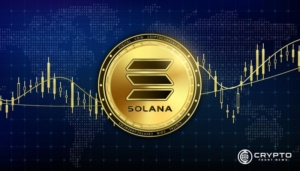- Helios introduces a multichain light client, allowing Ethereum rollups to scale efficiently without full node dependencies.
- With OP Stack compatibility, Helios enhances cross-rollup interoperability, supporting Ethereum’s transition to mass adoption.
- Helios integrates with key L2s, facilitating scalable, secure cross-rollup validation across Optimism, Base, and zkSync’s Elastic Chain.
Helios is setting a new benchmark in Ethereum scaling by introducing a multichain light client, offering a streamlined alternative for Layer 2 rollups. Rather than relying on full node rollups, Ethereum’s major rollups like Optimism and Base can now sync data securely and efficiently through Helios. This innovative framework effectively eliminates full node dependencies, significantly enhancing cross-rollup communication and expanding the ecosystem’s scalability potential.
Improving Cross-Rollup Syncing for Enhanced Interoperability
One of the key advantages of Helios is its compatibility with the OP Stack, which enables rollups within the Ethereum ecosystem to operate smoothly without requiring separate full nodes for each chain. This feature allows various rollups to securely communicate with one another, thus streamlining interoperability. Consequently, Helios is poised to optimize the network’s scalability and foster seamless connectivity between rollups, an essential step toward Ethereum’s broader adoption goals.
Notably, Helios’s light client model is becoming essential for Ethereum’s cross-rollup interoperability. According to developer Noah Citron, this approach greatly reduces operational complexity for rollups and enhances the efficiency of the network as more Layer 2 chains emerge. Rollup solutions such as Optimism’s Superchain and zkSync’s Elastic Chain are incorporating Helios as a trusted light client. This integration simplifies validation for cross-rollup messages, providing a scalable and secure way to support Ethereum’s rollup ecosystem.
Flexible Architecture for Future Rollup Expansion
Beyond its integration with existing rollups, Helios incorporates sequencer pre confirmations through its OP Stack compatibility, which grants the flexibility necessary for emerging blockchain architectures. Citron emphasized that Helios’s adaptable approach to block verification and execution enables it to connect with a wide variety of rollups. This versatility not only boosts Ethereum’s capacity to support more Layer 2 applications but also creates a foundation for future scaling endeavors across the Ethereum landscape.
In addition to enhancing Ethereum’s rollup capabilities, Helios’s development team is working to expand its reach to mobile and desktop applications. Efforts are underway to refine verification mechanisms and improve browser compatibility, aiming for a seamless experience across different platforms. An upcoming audit report on Helios’s Layer 1 consensus verification will further underscore its reliability, increasing transparency and trust for developers seeking efficient and secure cross-chain message handling.
Preparing Ethereum for Broad-Scale Adoption
With Ethereum’s future heavily reliant on scalable, interoperable systems, Helios is a critical advancement in the network’s evolution. By eliminating the need for rollup operators to run individual full nodes, Helios not only accelerates cross-rollup communication but also sets a new standard for Ethereum’s scalability. As more rollup configurations begin to shift on-chain, Helios’s multichain light client is expected to serve as a foundational tool for Ethereum, reinforcing its capability to support millions of global users effectively and securely.





